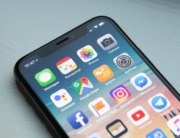Home / Handy Tips /

Whether you’re a photography enthusiast, a casual smartphone happy snapper or someone looking for a convenient way to back up and store your precious photos and memories, you’ll no doubt be looking for the best cloud storage for photos.
Both Apple iCloud and Google Photos offer good cloud storage options, with advantages and disadvantages to each platform. So, let’s dive into a head-to-head comparison, including free and paid plans, features, security, ease of use and more. Read on to decide which option is the best fit for your needs.
Free storage
The good news for amateur photographers on a budget is that both platforms offer some free storage. However, there are limitations. For example, Google offers a total free storage capacity of up to 15GB, but this includes storage for Google Drive files and Gmail as well as your photos. iCloud offers even less, with only 5GB of free storage, but with fewer other services included in the storage quota.
It’s important to note that you can specify which resolution you want to upload your photos in on Google Photos, whereas iCloud uploads photos in their original format on iCloud. Choosing a lower resolution takes up less storage space.
In summary, Google Photos just edges out Apple iCloud in the free storage department. The choice, much like a photographer’s framing, is entirely yours.
Paid plans
If you want to keep uploading and storing photos beyond the free storage amount, you’ll need to pay for a storage plan. Both platforms offer a number of paid storage options.
Google One paid storage
Prices start at $19.99 a year for up to 100GB of additional storage. Double your storage to 200GB for $29 annually, or $99/year for 2TB of storage. If you’re a trigger-happy photographer with stacks of photos, $249/year nets you 5TB of storage. There are also premium plans of up to 30TB for additional monthly fees.
Apple iCloud paid storage
iCloud gives you a cheaper storage option to start with, where you pay $0.99 per month for 50GB. $2.99/month gets you 200GB of storage and for $9.99 a month, you can enjoy the luxury of 2TB of additional photo storage.
As far as prices go for paid storage, both platforms come out very even.
Uploading and organisation
The upload process on both platforms is quick and simple. As mentioned, Google lets you choose the upload resolution while Apple uploads photos in their original format. Once you’ve uploaded numerous photos, you can allocate various photos to particular albums.
Both Google Photos and Apple Photos offer intuitive and smart search functions, making it easy to sort through thousands of photos to find just what you are looking for. For example, if you’re a pet lover, just search for ‘pet’ or ‘dog’ and the app will display all relevant photos. This applies to videos as well as photos. You can even filter results by dates.
When making a decision on using either Google or Apple for photo storage, you need to be aware of the devices you can access your photos on.
iCloud Photos
With iCloud’s web interface, you can manage, browse and upload photos and videos via a web browser, meaning you can use it on Android devices as well. However, iCloud limits key features such as editing tools, shared albums and automatic syncing to Apple devices.
Google Photos
Google Photos is accessible on most devices, as it provides apps for iPad, iPhone, Android and even iMessage. You can access most features using a web browser and the auto backup feature works on all devices.
For ease of upload and search functionality, both platforms are pretty even. Google Photos is the social butterfly of the tech world, showing up at every device party.
Additional features
Sharing
Both platforms have a ‘shared album’ feature which multiple people can contribute to. Google takes things a step further, using AI functionality and scanning to automatically share photos to different albums, depending on the subject. As an example, it will automatically sort nature and landscape photos into albums designated in these categories. Apple Photos requires the user to manually sort photos into albums. For people without Google or Apple accounts, you can create links to photos so they are accessible for everyone to view.
Photo editing
You can do a lot of editing on both platforms without the need for dedicated photo editing software. The Google edits are more automatic, while Apple requires manual editing. Google offers some one-click editing options for quick photo adjustment. You can also manually tweak the photos. There are some additional paid editing tools, like Magic Eraser and Unblur if you need them. Along with Google, Apple offers Instagram-like filters, and you can make manual adjustments to photos with a variety of sliders. With iCloud, you can actually isolate subjects from the background, which is a pretty cool feature. The Apple platform has some great lighting effects as well.
Movie function
Both applications allow users to create a movie from a series of photos and videos. This feature is very similar to Windows Movie Maker and allows you to add a soundtrack to the visual display.
Regarding sharing, photo editing and movie making, both platforms have their strong points, with Google allowing for more automation.
Security
Security features are very important, as you’ll want to safeguard your photo and video collections. Let’s look at how both Google and Apple protect your collections in the cloud.
Google Photos allows you to control your data and sharing settings. You decide who can access your collection and who you share your precious memories with. Multiple layers of security, including HTTPS and encryption at rest technologies, protect data.
Apple
iCloud offers both standard data protection and advanced data protection for photo and video collections, depending on your requirements. Apple encrypts all data stored on iCloud and secures it in Apple data centres.
Both platforms do an equally good job of protecting your privacy and data.
Overall Value
Google Photos and Apple iCloud come out fairly equal after comparing free and paid storage, the list of features, photo sharing capabilities, security measures and the overall user experience.
Google Photos allows accessibility on more devices than Apple’s iCloud, but Apple’s free storage allocation is fairer.
Ultimately, both platforms offer a good range of features, security and user-friendliness. Most likely, your choice will come down to whether you prefer either Apple or Android. It’s like choosing between a pineapple and a watermelon at a fruit party – both are delicious, but some people just prefer one over the other!
Need help organising your digital photos online?
Streamline your digital photo storage with the help of Computer Cures. If you need assistance setting up and managing your digital photo collection and videos, we’re the team you can count on.
Browse our digital photo storage solutions or get in touch today if you have any questions.








Leave A Comment